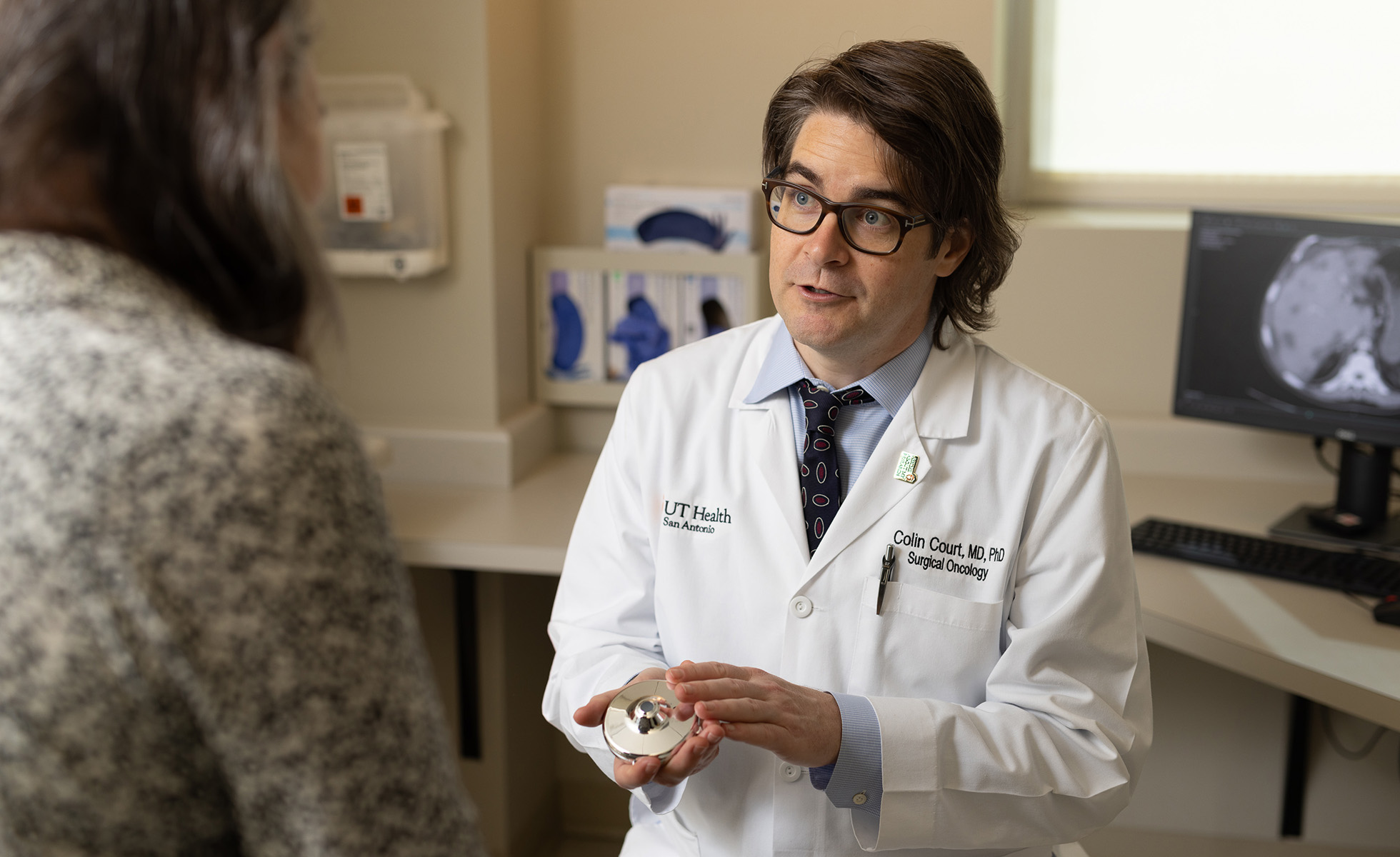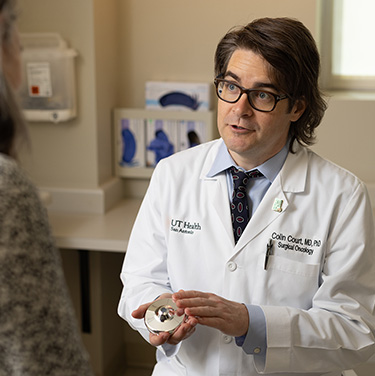

HAI Therapy for Liver Cancer
About hepatic artery infusion (HAI) therapy
HAI chemotherapy is for colorectal and bile duct cancers that spread to the liver. It’s also for cancers that start in the liver and are too big to remove surgically. HAI therapy is a regional chemotherapy that uses an implantable pump to deliver chemotherapy drugs directly to tumors. The drugs shrink tumors and prevent them from growing.
This method differs from traditional (systemic) chemotherapy, which circulates drugs through your bloodstream. Delivering treatments directly to a specific part of the liver helps you avoid side effects like nausea and hair loss. It also enables us to safely use strong chemotherapy doses — up to 400 times higher than systemic chemotherapy.
We frequently care for patients who have been told they must stay on systemic chemotherapy long term. HAI therapy reduces the need for ongoing treatment. You also experience fewer side effects during treatment because the chemotherapy drugs go directly to the tumor.
Surgeons use HAI therapy with the goal of shrinking cancerous growths, which may improve your eligibility for additional treatments, if necessary. You’ll find nearly any therapy you may need at Mays Cancer Center.
HAI therapy: What to expect
We conduct a thorough evaluation to find out whether HAI therapy is right for you. If you are currently on systemic chemotherapy, we work with your medical oncologist to determine the right time to start HAI therapy.
HAI therapy starts with a procedure to implant a palm-sized pump into your abdomen. You receive medication to put you to sleep and block sensation (general anesthesia).
The pump connects to the hepatic artery, one of the liver’s main blood vessels. You undergo lab testing and a special scan early in your treatment to confirm the chemotherapy is reaching the right spot.
After implanting the pump, you will notice a slight bulge, which make take some time getting used to. You can expect to stay in the hospital for a few days.
HAI therapy post-procedure care
After discharge, you return to our clinic about every two weeks. A medical oncologist adjusts pump settings and may refill it with either chemotherapy drugs or saline solution. Specially trained staff also check your pump to ensure it is functioning correctly.
When treatment is complete, the pump stays in place. We fill it with a special substance (glycerol) to keep it in working order in case you need treatment again. For more information, read frequently asked questions about hepatic artery infusion.
Why choose us for HAI therapy?
Highlights of our program include:
- Regional referral center for HAI therapy: Patients come to Mays Cancer Center for HAI therapy from South Texas, surrounding communities and beyond. If you are eligible, receiving timely treatment can help you start feeling better sooner and lower your risk of complications. We also welcome referrals from local oncologists.
- Expertise: We are one of a select number of programs specializing in regional cancer therapy like HAI chemotherapy. We only recommend this option if it’s appropriate for your needs. You receive precise care that consistently leads to improved outcomes.
- Multidisciplinary approach: A team of providers works together to ensure a seamless experience. A surgical oncologist guides the initial phases of treatment. Additional providers include medical oncologists, radiologists specializing in nuclear medicine, interventional radiologists and specially trained nurses. Meet our team.
- Leadership: Our team is part of a prestigious group of researchers advancing HAI therapy and other regional chemotherapies. We are part of an international consortium working to optimize care processes and outcomes. You may be able to participate in these efforts through. Find a cancer clinical trial.
Get cancer care
Get started by calling 210-450-5990. Our intake coordinator helps gather the necessary information for the initial consultation.

 Close
Close
